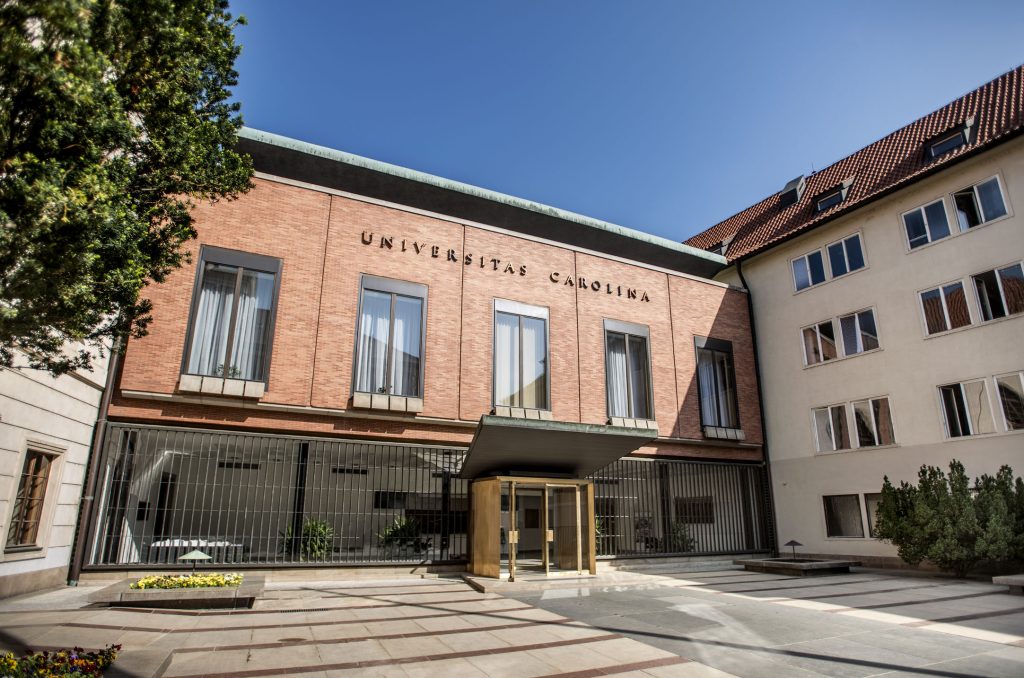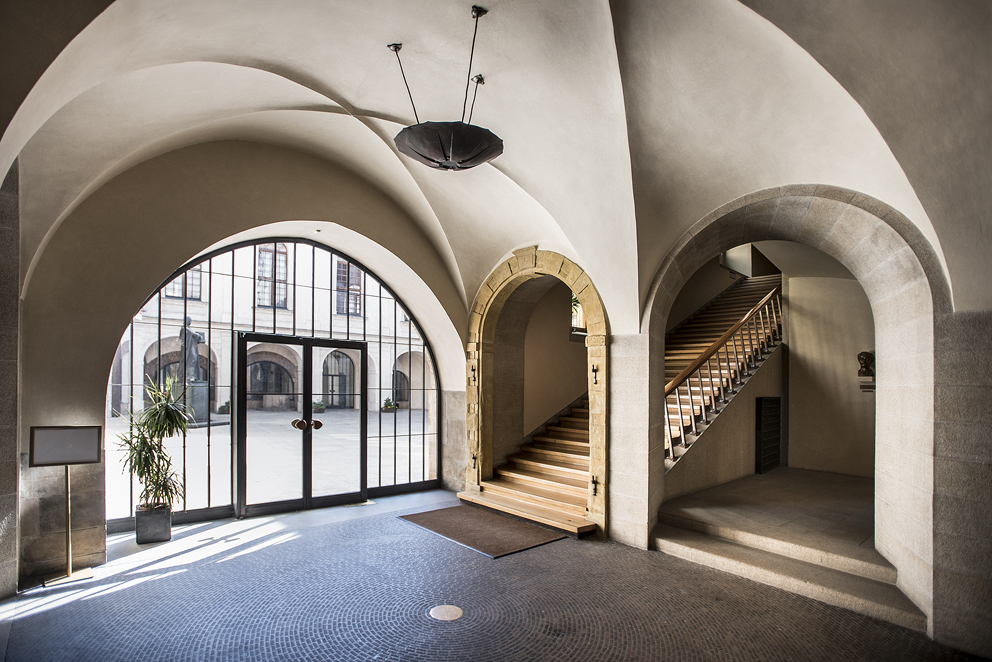
Karolinum – the historical seat of Charles University
Karolinum is a national cultural monument, a symbol of Charles University. Since the 14th century, it was the seat of the oldest house of the Prague University – the Charles or Great College (Collegium Caroli), founded by Charles IV for the twelve masters of the Prague university.
This unique monument has belonged to the University of Prague since 1383, when the son of the university’s founder, King Wenceslas IV, acquired one of the most magnificent palaces in the Old Town for the college, which had been built not long before by the wealthy patrician, royal mintmaster and banker Johlin Rotlev (Rotlöw). After the building modifications, the Karolinum served from 1386 as a residence not only for Prague professors who taught and lived there, but the college became the ceremonial meeting place of the university and the residence of the rector, academic leaders and authorities.
The Renaissance renovations left no major traces on the face of Karolinum. It was only the great Baroque reconstruction carried out between 1715 and 1718 by the architect František Maxmilián Kaňka that gave it a new look. His work was mainly the elaborate stylistic reconstruction of the college with the characteristic Baroque portal in Železná Street. The Karolinum building underwent its greatest change in the present century, when architect Jaroslav Fragner carried out an extensive reconstruction of the grounds between 1945 and 1959, which was completed by the creation of a courtyard of honour with a ceremonial entrance dominated by a fountain with three lions by sculptor S. Hanzík (1968). Fragner reverently preserved the medieval building parts, including the details covered by the Kaňka, and created a monumental architectural ensemble. The last reconstruction from 1996-1997 is the work of architect Tomáš Šantavý, who followed Fragner’s concept. Functional considerations prevail, the building is composed as a festive seat of university life. A new lecture hall on the ground floor (the so-called Imperial Hall) and meeting rooms in the basement were built, two lifts were constructed and the technical facilities were reconstructed, the sound system of the Great Hall was modernised so that the Karolinum could serve Charles University at the level of today.

The newly created Imperial Hall on the ground floor was named after the three paintings at its head, the likenesses of Empress Maria Theresa and her sons Joseph II and Leopold II. The paintings were created in 1799 by the eminent painter Barbara Kafft-Steiner, whose work includes three portraits of professors of the Prague Medical Faculty on the side wall of the hall. In the adjacent cloister there is a marble crucifix, the work of sculptor Emanuel Max from 1870.
The basic layout of the building consists of the Romanesque-Gothic rooms of the original palace, once the sunken ground floor of the 13th-century houses (now with a permanent exhibition on the history of the university), above which a Rothwellian palace was built in the 1460s. The Gothic reconstruction of the late 14th century, reminiscent in many ways of monastic spaces (the cloister with the cloister of paradise), adapted the building to the university’s purpose. The medieval premises of the college were not only used for teaching, but also served as a dwelling and the administrative headquarters of the university. On the ground floor were the rooms of the rector, the university notary, the university treasury (fiskus) and the prison for the members of the academic community (karcer), while the other rooms were mainly used for teaching.
Original information in Czech language: Historické sídlo UK – Univerzita Karlova (cuni.cz)
Conference venue address
Karolinum
Ovocný trh 560/5
Praha 1, 116 36
Czech Republic